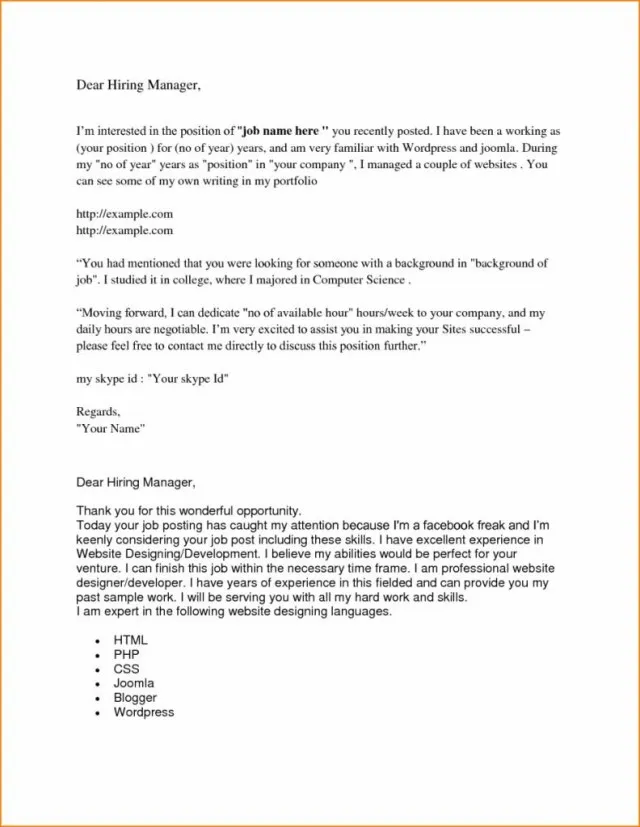The Challenge of No-Name Cover Letters
Writing a cover letter is a crucial step in the job application process. It’s your chance to make a strong first impression and showcase your qualifications. However, what happens when you don’t know the hiring manager’s name? The absence of a specific contact can make crafting a compelling cover letter seem challenging. Without a name to address, you might wonder how to make your letter stand out and avoid sounding generic. This guide offers practical advice and cover letter examples to help you navigate this common hurdle and create impactful applications that get noticed, even when a contact name isn’t available. It’s a reality in today’s job market, and knowing how to address it is crucial.
Why Contact Names Matter
Addressing a cover letter to a specific person often signifies that you’ve taken the time to research the company and understand their needs. It demonstrates a level of personalization that can make your application more memorable. When a hiring manager sees their name, it subtly suggests that you’re genuinely interested in the role and the organization. This attention to detail can set you apart from other applicants who may have sent out generic applications. Personalization humanizes your application, making you seem like more than just a resume, and helps build a connection before even an interview.
Impact of a Contact Name on Applications
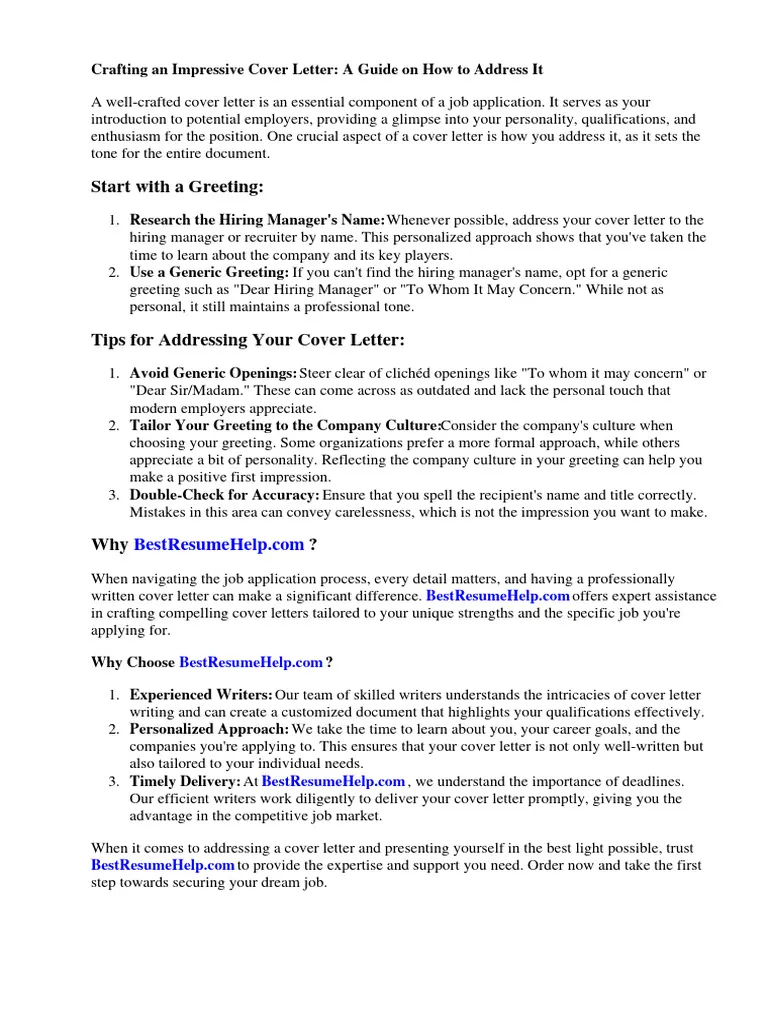
A personalized cover letter, including a specific contact name, typically leads to a higher chance of getting a positive response. This is because it shows initiative and an understanding of the role you are applying for. It signals that you’ve done your homework and are serious about the opportunity. Conversely, a generic cover letter addressed ‘To Whom It May Concern’ can easily get lost in the pile. While it’s not always possible to know the contact name, making an effort to find it or using alternative methods, such as addressing the hiring team, can significantly increase your chances of success. Personalization makes your application more relevant and engaging, which directly translates to a better first impression.
Circumstances When a Contact Name Is Unavailable
There are several situations where a contact name might not be readily available. In some cases, the job posting might not provide any contact information beyond a general email address or application portal. For larger companies, the hiring process could be managed by a recruitment team rather than a specific hiring manager, making it difficult to identify a single point of contact. Also, some organizations may deliberately avoid listing a name to streamline the application process or protect their staff from unsolicited inquiries. Understanding these scenarios is key to writing an effective cover letter when a specific name is absent.
Identifying the Hiring Manager
Before resorting to a generic salutation, always attempt to find the hiring manager’s name. Explore the company’s website, particularly the ‘About Us’ or ‘Team’ pages. Check LinkedIn to see if you can identify the person responsible for hiring or the team you would be a part of. If you’re applying through a recruiter, their name should be on the posting. Even a quick search can help you locate the hiring manager’s name. If you still can’t find a name, you may consider contacting the company via phone or email to inquire. The extra effort to identify the hiring manager often indicates your proactive nature and interest in the position.
Tips for Writing Cover Letters Without a Contact Name
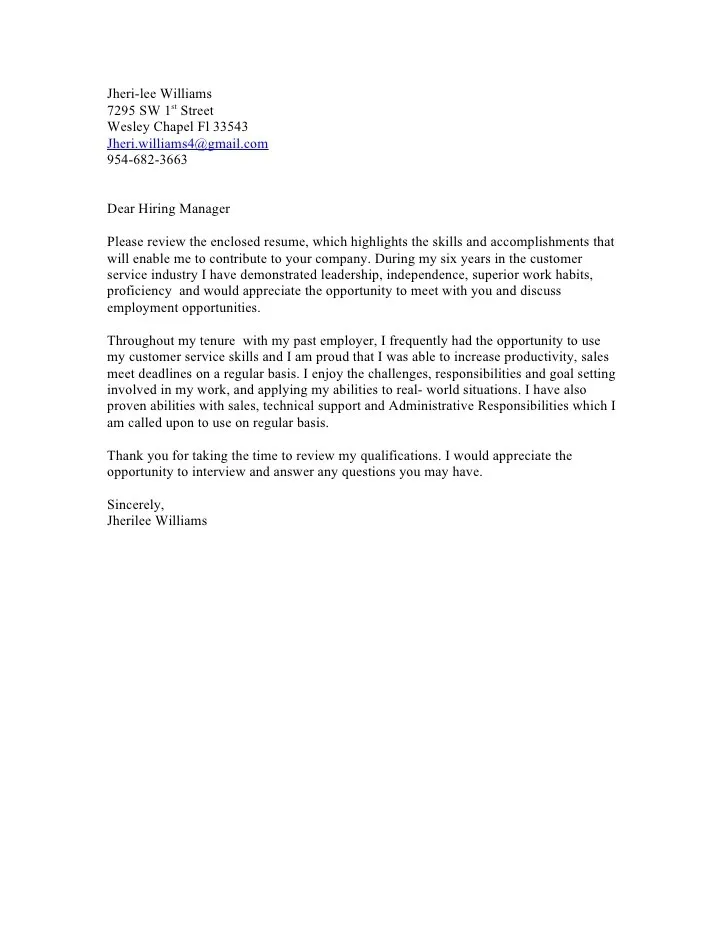
Writing a cover letter without a contact name requires a strategic approach to ensure your application stands out. Your goal is to show that you’ve put in the effort to research the company and tailor your application, even without a specific recipient. By implementing these tips, you can create a compelling cover letter that resonates with the hiring team and increases your chances of moving forward in the job search process. Each element of your cover letter should demonstrate how your skills and experience align with the specific job requirements and the company’s culture. This helps to create a strong narrative and a sense of connection.
Start with a Strong, General Salutation
When you don’t have a specific name, avoid the overly generic ‘To Whom It May Concern.’ Instead, opt for a more professional greeting. Examples include ‘Dear Hiring Manager,’ ‘Dear [Department Name] Team,’ or ‘Dear [Company Name] Hiring Committee.’ Research the company to determine the appropriate department or team. If the role requires a certain skill set, you can use ‘Dear [Skillset] Hiring Team’. The key is to sound informed and respectful. These alternatives add a touch of personalization and help to connect with the reader, even if you don’t know their name. Using a slightly more tailored greeting shows that you have taken the time to consider the company’s structure and the role’s context.
Research the Company and Role
Thorough research is even more critical when you don’t know the hiring manager’s name. Dive deep into the company’s website, social media profiles, and any available news articles to learn about their values, mission, and recent projects. Tailor your cover letter to showcase how your skills and experience align with the company’s specific needs. Reference any recent accomplishments or initiatives of the company to demonstrate your understanding of their business. When describing your skills, use keywords from the job description to demonstrate your suitability. This level of detail shows that you have invested time in learning about the company, which significantly increases your chances of making a favorable impression. (Image: research-company.webp)
Highlight Relevant Skills and Experience

Focus on the skills and experience most relevant to the job. Review the job description carefully and identify the key requirements. Then, in your cover letter, provide specific examples of how you’ve demonstrated those skills in the past. Use action verbs to describe your accomplishments and quantify your achievements whenever possible. Quantifying your accomplishments using numbers and data strengthens your claims, demonstrating your impact. For instance, instead of saying ‘managed social media,’ say ‘Increased social media engagement by 30% in six months.’ Tailor your letter to the job requirements, demonstrating how your skills and experience make you a perfect fit for the role. (Image: skills-experience.webp)
Show Enthusiasm for the Company
Demonstrate your genuine interest in the company and the role. Explain why you’re excited about the opportunity and what attracts you to their mission or values. Show how your career aspirations align with the company’s goals. Mention something specific that appeals to you about the company’s work environment, products, or services. Enthusiasm can make your application much more memorable and attractive. This proactive approach shows that you are truly invested in joining their team. Passion and enthusiasm can often be the deciding factor in a hiring process, even when qualifications are nearly identical.
Use a Professional Closing
End your cover letter with a professional closing that reiterates your interest and availability. Use ‘Sincerely,’ ‘Best regards,’ or a similar formal phrase. Restate your enthusiasm for the role, thank the hiring team for their time, and make it clear that you are looking forward to hearing back from them. Include a call to action, such as ‘I look forward to the opportunity to discuss my qualifications in more detail.’ This strong closing leaves a positive and lasting impression. Proofread your closing carefully, and make sure your contact information is clearly listed. A clear and professional closing is a critical aspect of creating a positive impression. (Image: professional-closing.webp)
Example Cover Letter Structure
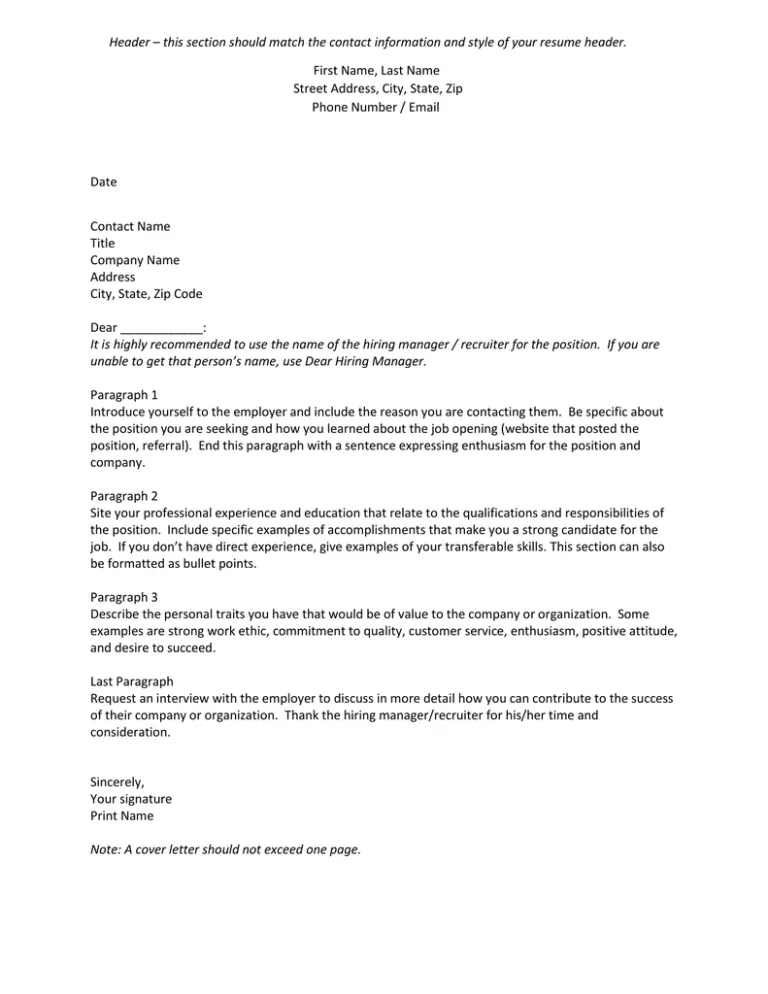
Structuring your cover letter correctly can significantly improve your chances of making a strong impression, even when a contact name isn’t available. A well-organized cover letter helps to highlight your key qualifications and demonstrates professionalism. The following structure is recommended to ensure a comprehensive and compelling presentation of your skills and experiences.
Opening Paragraph
Start with a clear statement of purpose. State the position you are applying for and how you learned about the opportunity. If possible, mention a mutual connection or point of reference, but this is not mandatory. For example, ‘Dear Hiring Manager, I am writing to express my strong interest in the Marketing Manager position advertised on [Platform].’ Briefly introduce yourself and mention the most relevant skills and experience that align with the job requirements. Make sure that the first paragraph immediately grabs the reader’s attention and conveys your enthusiasm for the role and the company.
Body Paragraphs
The body paragraphs are the meat of your cover letter. Here, provide detailed examples of your accomplishments and how you meet the job’s requirements. Each paragraph should focus on a different skill or experience, linking it to the job description. Use the STAR method (Situation, Task, Action, Result) to structure your examples. Clearly explain the situation, your task, the actions you took, and the results of your efforts. Include data and metrics to quantify your achievements. Ensure that the information you present is relevant and easy to follow. Provide specific examples of how you have previously handled similar responsibilities and what you have accomplished.
Closing Paragraph
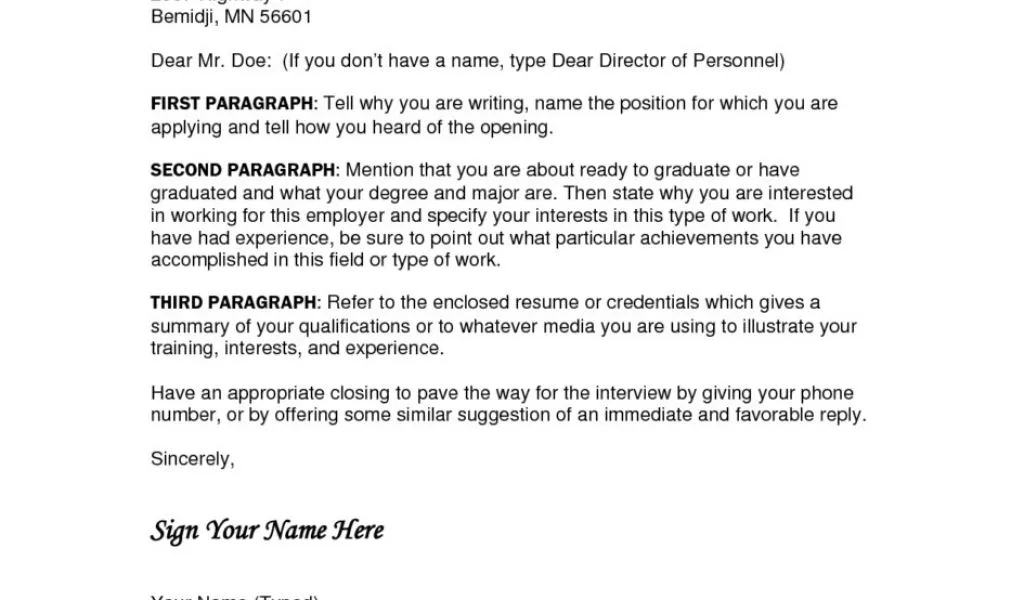
Summarize your key qualifications, restate your interest in the role, and thank the reader for their time and consideration. Include a call to action to encourage further engagement. Clearly state your availability for an interview, and provide your contact information. End with a professional closing, such as ‘Sincerely,’ followed by your name and contact details. Make sure to proofread your cover letter to remove any typos or grammatical errors. This final paragraph reiterates your desire to join the company and your readiness for the next steps in the application process.
Avoiding Common Mistakes
When crafting a cover letter without a specific contact name, it’s essential to avoid common mistakes that can undermine your application. These errors can make your cover letter appear unprofessional or, worse, indicate that you did not invest time in applying. By avoiding these pitfalls, you’ll ensure your cover letter highlights your strengths and maximizes your chances of getting hired. These are common errors that you should address before submitting your application to ensure it makes a positive impression.
Generic Language and Clichés
Avoid using generic phrases and clichés that make your cover letter sound impersonal. Common phrases like ‘I am a team player,’ ‘I am hardworking,’ and ‘I am a highly motivated individual’ are overused and don’t offer concrete evidence of your abilities. Instead, use specific examples and accomplishments to demonstrate your skills. Show, don’t tell. Replace these generic statements with detailed descriptions of how you’ve contributed in past roles, showcasing your tangible achievements. This approach makes your cover letter more compelling and memorable.
Typos and Grammatical Errors
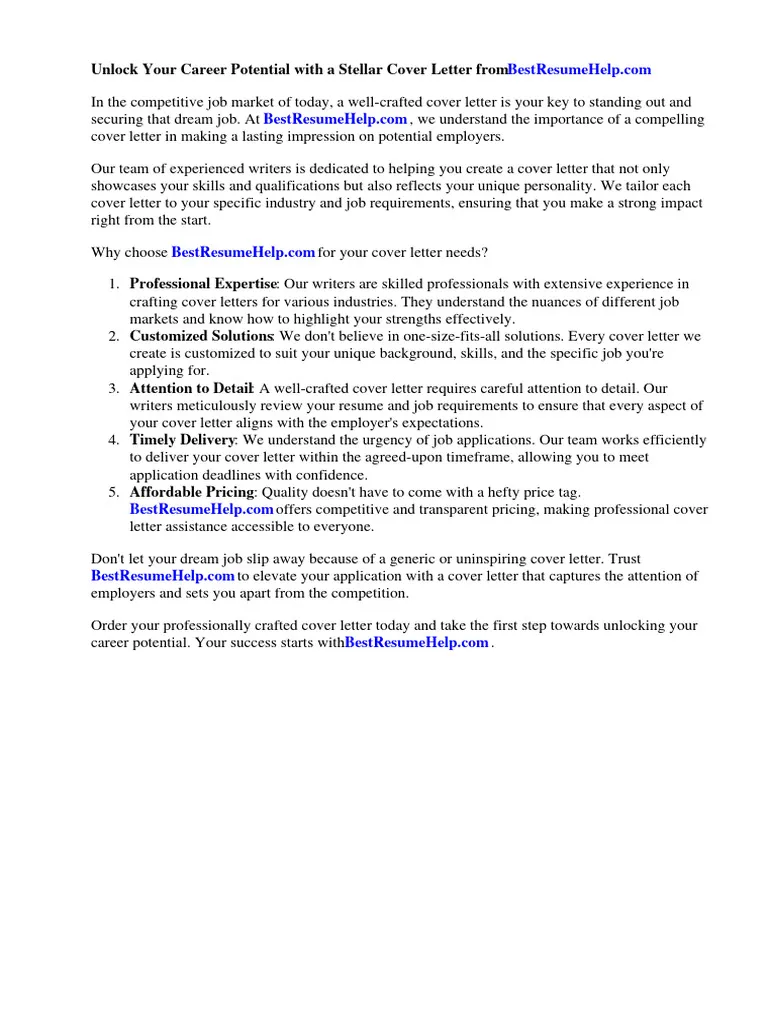
Typos and grammatical errors can severely damage your credibility. Proofread your cover letter carefully, multiple times, before submitting it. Use grammar and spell-check tools, but also read the letter aloud to catch any errors that may be missed by automated tools. Consider asking a friend or colleague to review your cover letter as a second pair of eyes. A polished and error-free cover letter demonstrates your attention to detail and your commitment to professionalism. Failing to proofread your document sends a message that you do not pay attention to detail, which may harm your chances of getting hired. (Image: cover-letter-mistakes.webp)
Failing to Tailor the Letter
One of the most significant mistakes is failing to tailor your cover letter to the specific job and company. Each cover letter should be customized to match the requirements of the role and the company’s values. Generic letters show a lack of effort and disinterest. Research the company and the role thoroughly and adjust your letter accordingly. Highlight the most relevant skills and experiences and demonstrate how they align with the job’s needs. Show that you understand the company’s mission, values, and recent projects. This tailored approach significantly increases your chances of making a positive impression on the hiring team. (Image: tailor-cover-letter.webp)
Conclusion
Writing a cover letter without a contact name doesn’t have to be a disadvantage. By focusing on strong, general salutations, thorough research, and highlighting relevant skills, you can create a compelling cover letter that makes a positive impression. Remember to show your enthusiasm, use a professional closing, and avoid common mistakes like generic language and typos. By following these tips, you can increase your chances of getting noticed and securing the job you want. Crafting a strong cover letter, regardless of the specific contact information available, is an essential skill in today’s job market. Good luck with your job search!
